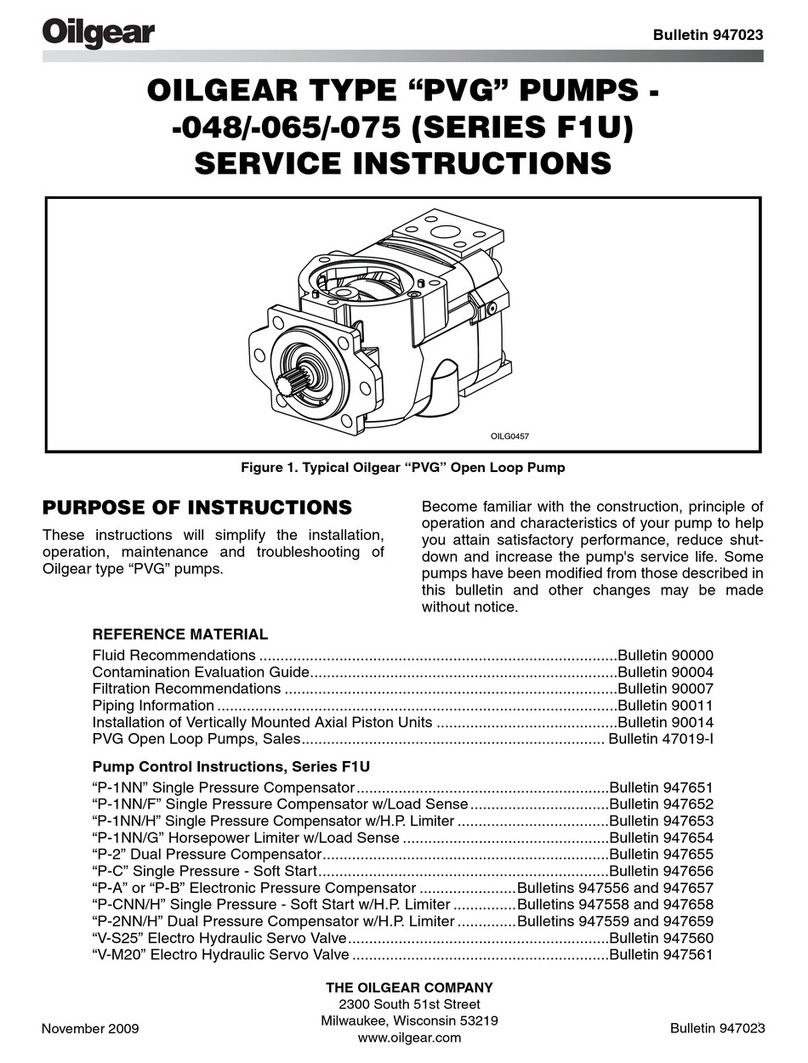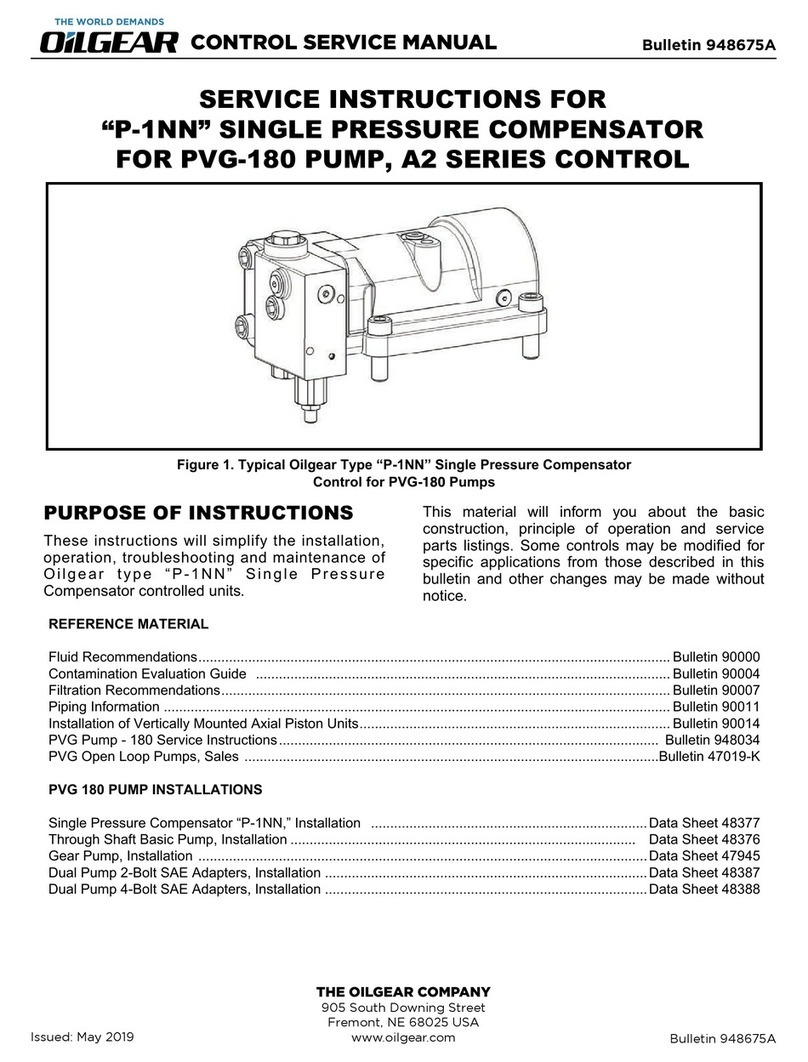Hydraulic systems operate under very high pressure.
Hydraulic fluid escaping from a pressurized system can
penetrate unprotected body tissue. DO NOT inspect for
hydraulic leaks with bare hands or other exposed body
parts. As a minimum, wear leather gloves prior to
inspecting for leaks and use cardboard or wood. If leaks
are present, relieve pressure and allow system to cool
prior to servicing. If injured by escaping hydraulic oil,
contact a physician immediately. Serious complications
may arise if not treated immediately. If you have
questions regarding inspecting for hydraulic leaks,
please contact Oilgear prior to servicing.
Hydraulic hoses and tubing must be inspected on a daily
basis for leaks, cuts, abrasions, damage and improper
clearance alongany mounting frame for hidden damage
before the unit is put into service. Replace damaged
hoses or hoses you suspect are damaged before the
system is returned to service! Hoses must be replaced
every two years. Failure to properly inspect and
maintain the system may result in serious injury.
Hydraulic systems are hot. DO NOT TOUCH! Serious
personal injury may result from hot oil. When you have
completed working on the hydraulic system,
thoroughly clean any spilled oil from the equipment.
Do not spill any hydraulic fluids on the ground. Clean
any hydraulic fluids from your skin as soon as you have
completed maintenance and repairs. Dispose of used
oil and system filters as required by law.
DO NOT enter under hydraulic supported equipment
unless they are fully supported or blocked. Failure to
follow this procedure can result in serious injury or
death.
Use correct hoses, fittings, and adapters with the
correct SAE rating when replacing hoses to prevent
possible serious injury. Always replace hoses, fittings,
and adapters with replacements that have a proper,
suitable, working pressure rating. Replacement hoses
must be of the correct length and must comply with the
hose manufacturer’s and Oilgear’s installation
guidelines and recommendations.
Hydraulic hoses have the SAE ratings marked on the
hose to assist you in selecting the correct hose. The
same manufacturer must supply any replacement
hydraulic hoses and fitting assemblies. As an example:
Brand “X” hose and brand “Y” fitting will not normally
be compatible. No “twist” is allowed in the hydraulic
hoses. “Twist” may result in premature hose failure.
This can cause serious injury. Please contact Oilgear for
assistance when required.
Hydraulic cylinders can be holding a function in a
certain position when the pump is OFF. An example of
this is a function being held in the lift or partial lift
position by the cylinders. If a hydraulic line is removed
or the hydraulic circuits or controls are being worked
on, gravity may allow the function being held in
position to drop. All workers and personnel must
remain clear of these areas when working on or
operating the hydraulic system. Block and secure all
devices and functions which apply before beginning
work or operation. Failure to comply with this can
result in serious injury or death.
Any hydraulic pipe which is replaced must conform to
SAE J1065 specifications. If incorrect hydraulic pipe is
installed, the hydraulic system may fail, causing serious
injury. Damaged or leaking fittings, pipes or hoses must
be replaced before the system is returned to service.































